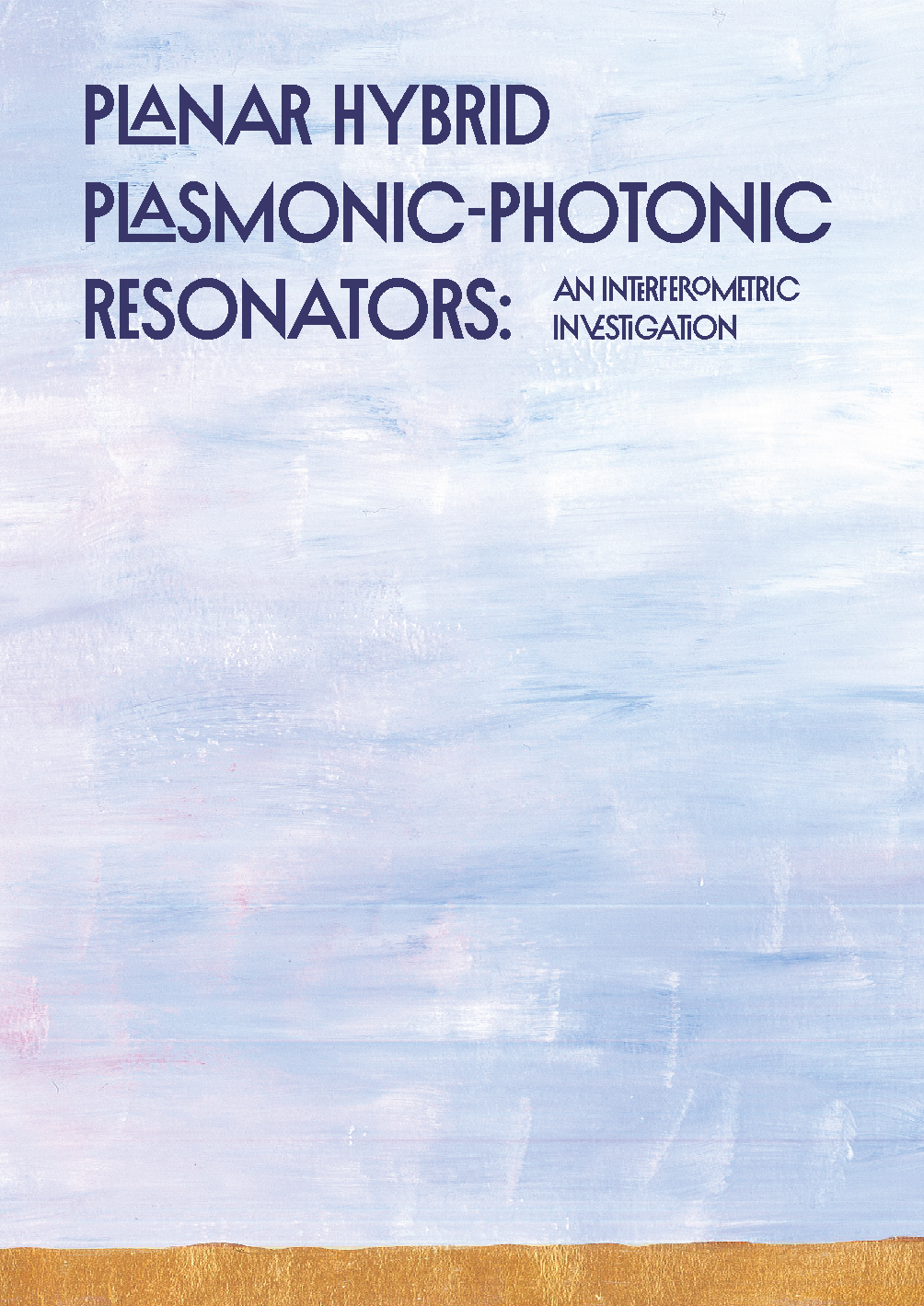Planar hybrid plasmonic-photonic resonators: an interferometric investigation
The interaction between light and matter (an atom or a molecule) is generally weak, while the ability to controllably load photons into these ’emitters’ allows important applications in for example sensing and quantum information processing. The light-matter interaction needed for these operations can be enhanced through the confinement of light in resonant photonic systems. Possible pathways to such confinement are optical trapping in photonic cavities and the use of plasmonics. This thesis explores a hybrid combination between the two: plasmonic- photonic resonators, and in a planar geometry.
We first present a simple transfer-matrix model to calculate the response of arbitrarily layered stacks of metal, insulator and plasmonic nanoantenna arrays. The application of this model shows expected points of perfect absorption in Salisbury screens and strong coupling signatures in a system consisting of a plasmon antenna array centered in a Fabry-Pérot cavity. We subsequently present the experimental realization of said Salisbury screens and measure their amplitude and phase response in reflection, in a femtosecond common path interferometer. We resolve singular points in reflected phase, confirming zero reflection. In a second experiment we measure strong coupling in metasurface etalons, accompanied by strong polarization conversion. Finally we explore femtosecond plasmonic dynamics using a nonlinear interferometric autocorrelation technique via the detection of two photon excited luminescence of quantum dots in the near field of silver nanorods.



